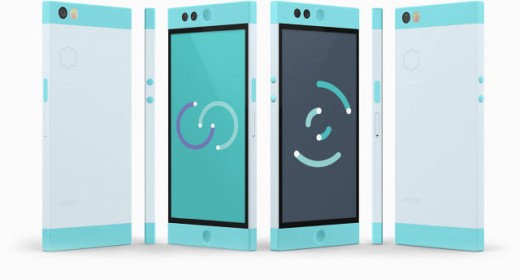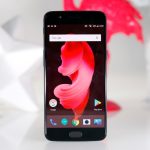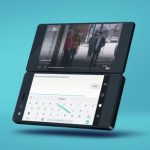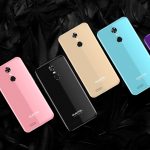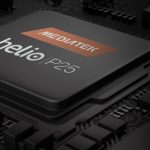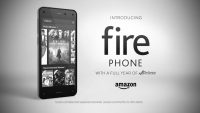With 33 employees, Nextbit Hopes to achieve ways that Smartphone Giants can’t
“Samsung Smartphone sales Will Decline For the first Time Ever This 12 months”
“HTC forced to lay Off employees because of Loss In Smartphone gross sales”
“Microsoft Writes Off $7.6B, Admits Failure Of Nokia Acquisition”
“Sony Weighing Up choices If Smartphones Are Unprofitable subsequent year”
read a couple of information tales concerning the smartphone business—as a minimum ones involving any main firm that is not named Apple—and you may marvel why somebody bothers to stay in it. Between brutal price war and the issue of constructing actually varied products, making telephones has grow to be a great way to lose a lot of money.
after all, most of the manufacturers which are hurting have one thing in well-liked: they’re enormous. Economies of scale are imagined to help companies do neatly, however within the present smartphone business, they certain do not guarantee the rest.
but what if you could build a smartphone startup that had virtually nothing in in style with the class’s biggest names? person who was willfully small and capable of designing phones that stand out from the me-too %? at the very least, you’ll face a distinct set of challenges than the businesses which have been making telephones for years.
Enter Nextbit. In an industry where high-profile world firms are shedding staff with the aid of the thousand, it has just 33 people complete, ensconced in a comfy headquarters above a Safeway supermarket close to San Francisco’s AT&T Park. it could possibly make phones with a team of workers that small as a result of it is relaxed counting on outside expertise and tools to perform quite a few heavy lifting reasonably than doing as much as that you can think of itself.
a very powerful point: Nextbit isn’t looking to build a smartphone to delight everyone, the way manufacturers who hope to move handsets by means of the million nearly all the time do. Its Robin phone runs Nextbit OS, a modified model of Android with one of the most most enormous revisions that somebody’s given Google’s working machine. The phone’s industrial design steers clear of the present typical knowledge about what sells. (Which is, mentioned in brief, “telephones that appear kinda like an iPhone.”) Even the emblem “Robin”—which the company says it selected as a result of buyers are free to interpret it because the title of a person, a lady, a chicken, a superhero, or no matter else they make a selection—is a departure.
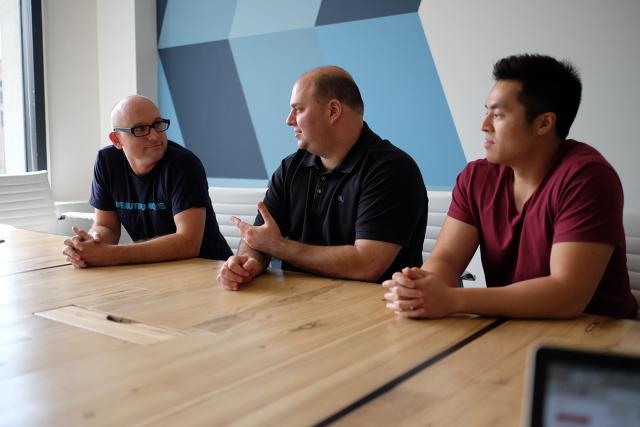
Nextbit is not hopelessly naive in regards to the difficulties of the trade it’s chosen to enter. Moss and Chan were each early members of Google’s Android staff; chief product and design officer Scott Croyle was formerly at HTC, a company that has proved in contemporary years that it can be that you can think of to make really good telephones and nonetheless fight. When Moss and Chan began the company and began raising money, they planned to make instrument and services and products, no longer hardware. it can be just that they concluded alongside the best way that one of the simplest ways for these tool and services to have an impact was on a brand new smartphone.
“I’ve labored on each hardware and tool and individuals are like, ‘Oh, hardware is so arduous,’ says Croyle. “tool’s laborious too. I imply, consider what number of software startups have failed.”
A $400 cellphone With a couple of variations
one of the most lessons that big makers of Android phones have slowly learned is that it is tough to be triumphant with flagship fashions that tackle the iPhone immediately at excessive-end, iPhone-like prices. (Samsung is likely one of the few firms still pursuing that strategy.) With Robin, which sells for an unsubsidized worth of $400, Nextbit aspires to provide one thing better than naked-bones models with out asking anyone to shell out $650, the beginning value for an iPhone 6s.
Robin has a squared off, two-tone, polycarbonate case, much less reminiscent of the iPhone than of the colourful plastic seem of sure Nokia Lumia smartphones. The specs are just about what you may are expecting from a respectably outfitted, midrange phone, with a relaxed (but now not huge) 5.2″ monitor, Qualcomm Snapdragon 808 processor (the identical one as in Google’s Nexus 5x), a fingerprint scanner built into the ability button, a 13MP rear digicam, and twin front-facing audio system.
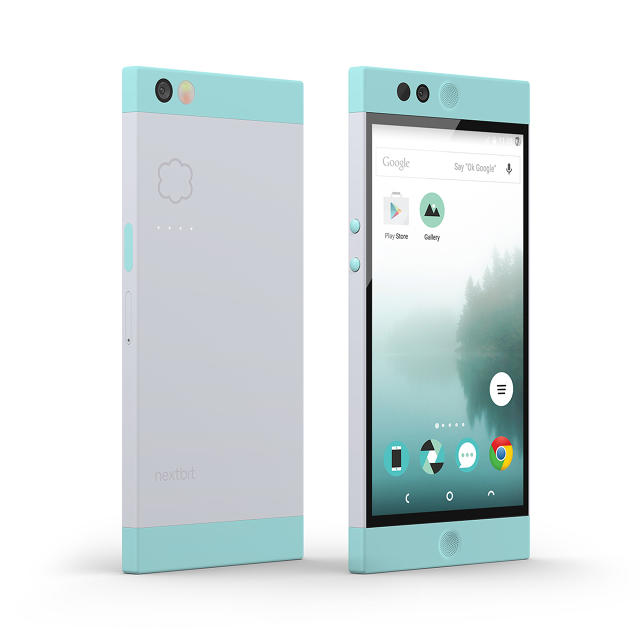
The phone’s tool is more of a departure than its hardware features and specs. different Android-centric cellphone makers had been step by step moving away from radical tampering with the working device as equipped via Google. Nextbit, on the other hand, carried out one great big trade, designed to handle a common challenge with different telephones: the potential of working out of space for apps, photographs, and different items.
Robin ships with 32GB of storage—now not skimpy, but additionally not so much that no conventional consumer will ever run the risk of filling it up. however Nextbit has rejiggered the running device so that the phone, somewhat than its owner, is liable for managing storage. If an app hasn’t been used for awhile, the telephone quickly deletes it however leaves a grayed-out version of the icon on the pc. tap on the icon, and the phone will obtain and install it again on the fly. It also retailers high-decision versions of photographs within the cloud, maintaining extra space-efficient, low-res versions on the telephone.
To steer clear of taxing its battery or racking up data charges, Robin syncs local storage and the cloud when it’s plugging into AC energy and related by the use of Wi-Fi. four LEDs on its backsite remove darkness from to show that shuttling data to and fro.
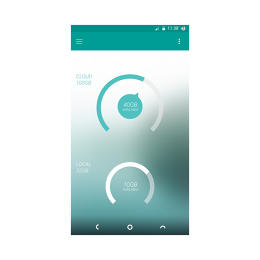
whether this hybrid way to storage is a thorough boost on stock Android for any particular individual is dependent in large part on how that person makes use of a cellphone. (For a lot of people, streaming apps equivalent to Spotify have already decreased the want to maintain humongous amounts of data on the telephone itself). but it represents a fundamental rethinking of Android’s architecture, and is subsequently a departure from the typical changes that phone manufacturers make to the operating device—most of which contain interface tweaks. Nextbit had made a number of of those, too, including editing the Android product launcher so it’s extra like iOS, with a single view of apps neatly prepared into grids on a couple of pages.
Bringing in the large weapons
creating a smartphone could be an bold enterprise for any small startup. And with the aid of producing one who’s a little bit out of the odd on several fronts, Nextbit made the challenge it set for itself even more…well, difficult. So how did it get it accomplished?
On the manufacturing entrance, the corporate did what telephone companies of all sizes do: It outsourced the job to an immense Asian contractor. in fact, it hired Foxconn, one of the best-recognized and busiest one of all. “Foxconn, they make just a few phones in this world, proper?,” Croyle jokes. “whether it is Xiaomi or whether or not it’s Motorola. The rumors are that they do some Apple telephones too.” Foxconn has deep knowledge of phone design, elements, and manufacturing, and buys parts in vast portions; its sheer hugeness was an asset to the Robin venture.
For assist getting the cellphone designed, the corporate referred to as in a consultancy known as Design Shift, whose different tasks have incorporated the DxO One smartphone digital camera and Clover cell printer. founded by a former government at smartphone pioneer Palm, Design Shift has staffers both in the Bay house and in Taiwan. That made it a really perfect partner in managing the relationship with Foxconn, and supposed that Nextbit may accomplish rather a lot without boots on the ground of its personal in Asia. “there may be no doubt been times perhaps the place I wish I had someone native, but i feel general it can be been an ideal possibility,” Croyle says.
In many ways, he provides, selecting designing a brand new smartphone and choosing elements is an easy jigsaw puzzle. “It comes down to how so much board area do you want for that individual chip set and feature set, and then what sort of [cellular] bands are you going to improve in the phone, after which this is your battery dimension. Then, we now have questions like, ‘neatly, is that [battery life] enough sufficient?’ Then, you go through a complete train of how so much thickness are you able to afford.” Nextbit was comfy relying on Foxconn and Design Shift’s information for technical matters comparable to choices involving antenna design. “Stuff like the match and finish, the place i have a higher opinion, we might work with them,” he says.
as a result of Nextbit had a lot assist on the hardware entrance, it was in a position to speculate extra tools in Robin’s tool, a neighborhood where its Silicon Valley heritage could play a crucial position in differentiating the telephone from garden-variety telephones designed completely in Asia. Even there, the company found that it made feel to name on exterior resources: It struck a handle a company in Poland to do one of the vital work on the phone’s launcher interface.
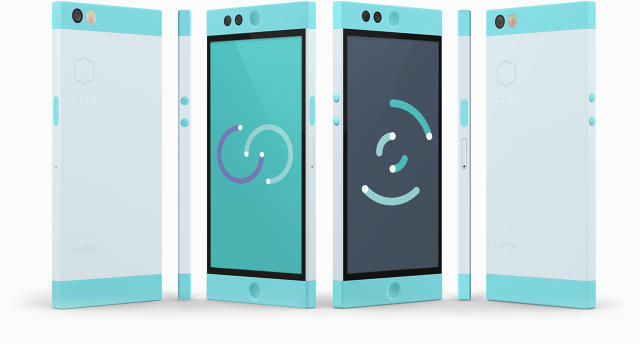
The Kickstarter factor
With its plans for Robin largely locked down, Nextbit launched the cellphone as a Kickstarter campaign in September 2015. It raised $1.36 million from more than 1300 backers, but as with many crowdfunding efforts by using corporations that already have financial wherewithal, the goal had less to do with elevating money than it did with effectively creating a community and constructing a model. (the corporate firstly planned to ship backers their Robins by using January; as many crowdfunding tasks, it took a tad longer than anticipated, but it surely says that it can be now delivered telephones to those that backed the marketing campaign or placed preorders.)
Kickstarting Robin also provided direct client input into product plans in a method that may now not have happened if Nextbit had been a big company taking a typical method to designing its phone.
“initially, we didn’t ship to Australia because we didn’t have this one band,” Croyle says. “Then we received messages, ”That band doesn’t matter in Australia. it’s just one provider, and no one ever makes use of that.’ We opened it as much as Australia and in an instant had just a little bump there, which used to be awesome. We got this actual-time comments.”
Nextbit, which had been planning to ship a GSM telephone to be used on AT&T and T-cell’s networks within the U.S., also heard from sufficient Verizon and dash shoppers to convince it that it used to be value creating a 2nd model of Robin, which it added to its Kickstarter campaign. “each Tom and i have some experience coping with the carriers, however Verizon and dash, they’re very protecting of their community and they have got expertise that allows them to be,” Croyle says. “Whereas, if you’re with AT&T and T-cell you just drop your SIM in and you might be just right.”
in spite of everything, though, the Verizon/sprint version of Robin ended up proving that Nextbit’s capability to compete with the cellphone industry’s big guys isn’t boundless. with a purpose to get Robin working on the Verizon and sprint networks, the company needed a definite degree of cooperation from these two carriers, and the challenge turned out to be far more complex and dear than it expected. not too long ago, it concluded that it may well’t make the Verizon/dash model of Robin work in spite of everything and ditched the effort, even supposing Kickstarter backers and those who’d positioned preorders were expecting to get phones.
As Nextbit cofounder Tom Moss defined the embarrassing determination on the corporate’s website online:
What people on the carriers, in just right religion given our need for speedy solutions, idea would take “weeks” has become “months.” What they concept would price “a whole lot of thousands of dollars” has turned into “hundreds of thousands”. And we’re still no longer there. The purpose posts are still being moved, and at this point, we predict it’s higher to cancel this version moderately than proceed to take a look at and make progress and not using a clear answers to offer regarding once we would if truth be told be capable of ship.
Kickstarter backers who have been expecting to get that edition will get refunds; others who preordered it will have their orders cancelled with out being charged. And Nextbit will offer both teams a 25% bargain on the GSM version by means of apology.
The provider Conundrum
In a method, Nextbit operating into trouble when it wanted to rely on Verizon and dash for technical help was a reminder of a elementary reality concerning the firm: it can be attempting onerous now not to place itself ready the place its efforts and pursuits are entangled with these of the major wireless carriers. that’s why it’s selling immediately to consumers, who buy a Robin after which pop in their own SIM card.
“What the carriers do for you is they get you get entry to to buyers,” Croyle says. however as part of the proposition, carriers regularly need to get all in favour of product-design concerns. They put phones thru time-ingesting, dear lab trying out and certification. they usually are expecting manufacturers to cough up money to assist market phones, particularly if a given version isn’t selling well with out promotional offers.
Croyle tells me a narrative he heard from somebody who works for any other smartphone company. It selected to avoid offering a telephone with a undeniable display measurement because it was once involved about the reaction of a wi-fi service which it was working with on some other edition which wouldn’t arrive for months. “They deliberately went to this product that they felt will have to be one screen size, and adjusted the reveal dimension so it do not need channel war with the service,” he explains.
despite the fact that individuals aren’t going to purchase a Robin as a result of an AT&T or Verizon salesperson thrusts one into their fingers, the telephone is designed to be the kind of product that could be successful thru the best advertising of all: word of mouth. “I was just flying again from Mexico (March 18, 2016) and that i child you not, I was once sitting there on the flight and that i had my telephone on the little table,” Croyle says. “The flight attendant was once giving me a cup of water and she’s like, ‘What’s that telephone? I need to know about that.’ that’s came about to me, just when you consider that November, at the least a dozen times. both i am at a retail keep, or a garb retailer, or it’s this flight attendant.” (Having carried a gentle blue and white Robin round while working on this story, i will be able to confirm that it attracts unsolicited attention in a method no Apple or Samsung telephone does.)
“the most effective we are able to do is figure laborious and get [consumers] a product that with a bit of luck they’re going to love,” Croyle adds. “we will skin our knees and bruise our elbows. there is going to be issues that aren’t good, and that is real with any product launch, whether it’s hardware or instrument. it is how you reply to that stuff which is actually a key to the success of a company.” In a global through which large and theoretically powerful smartphone makers have ceded keep watch over over their products within the interest of mass-market gross sales, Nextbit’s willingness to be small and centered at least gives it a decent shot at figuring out its personal future.
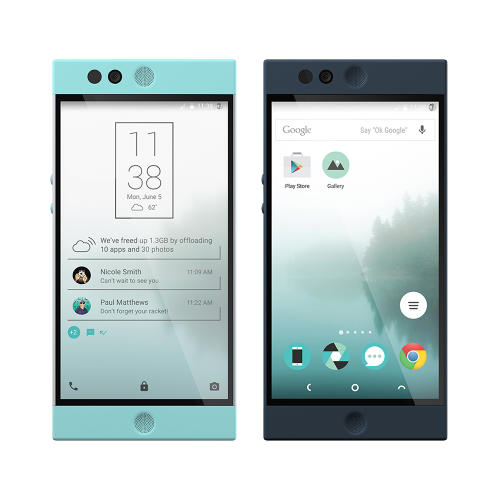
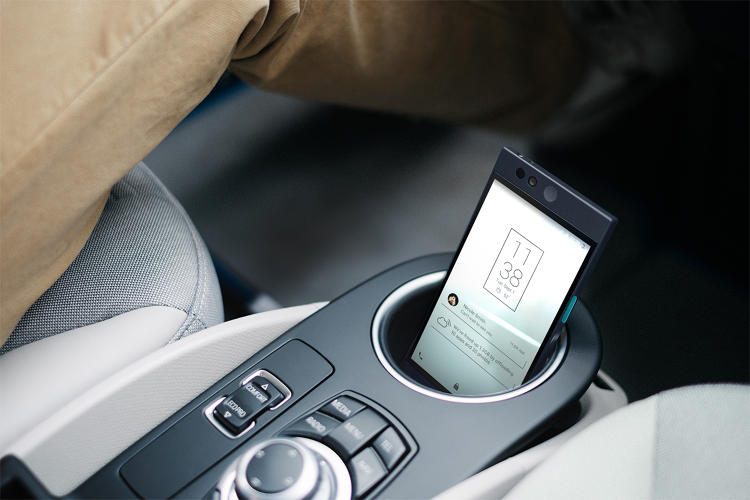
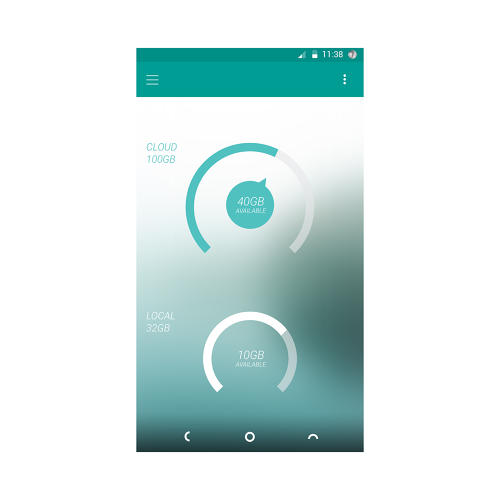
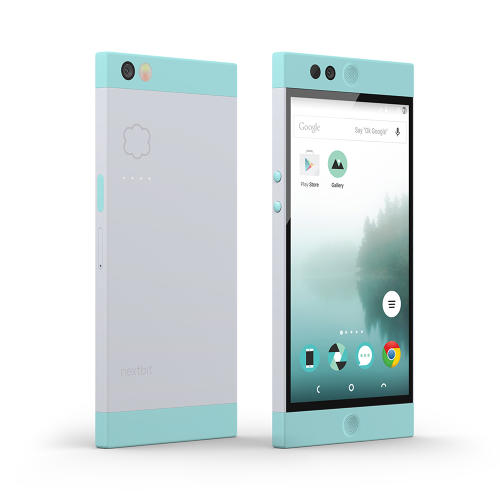
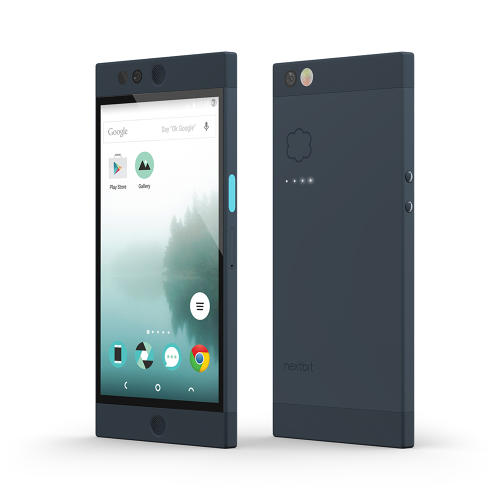
fast company , read Full Story
(17)

